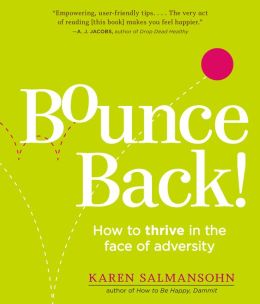Strength in the face of adversity. Author Salmansohn explains that this is what she needed to find after she was sexually assaulted. It was hard. This book is a result of her efforts to collect tools for her “resiliency toolbox”. Among the 75 tips offered to the reader in brief (1-3 page) chapters are the obvious (tip #2 What you are going through right now is normal” and tip #3 “There is no such thing as normal.”) as well as the metaphorical (tip #51 "Anger is a boomerang.”) Some, like #51, are followed by an assignment-- actionable steps the reader can take to implement the advice offered. While students do not gravitate toward this title, social workers and librarians may want to have it on hand as a quick how-to. Adults who work with incarcerated and detained youth may be interested in checking this book out for themselves. Readers will note that while much of the advice is relevant to teens of both sexes, Salmansohn’s intended audience is adult women like herself.
Salmansohn, Karen. Bounce Back: How to thrive in the face of adversity, setbacks, and losses. New York: Workman Publishing Company, 2008. Print.












